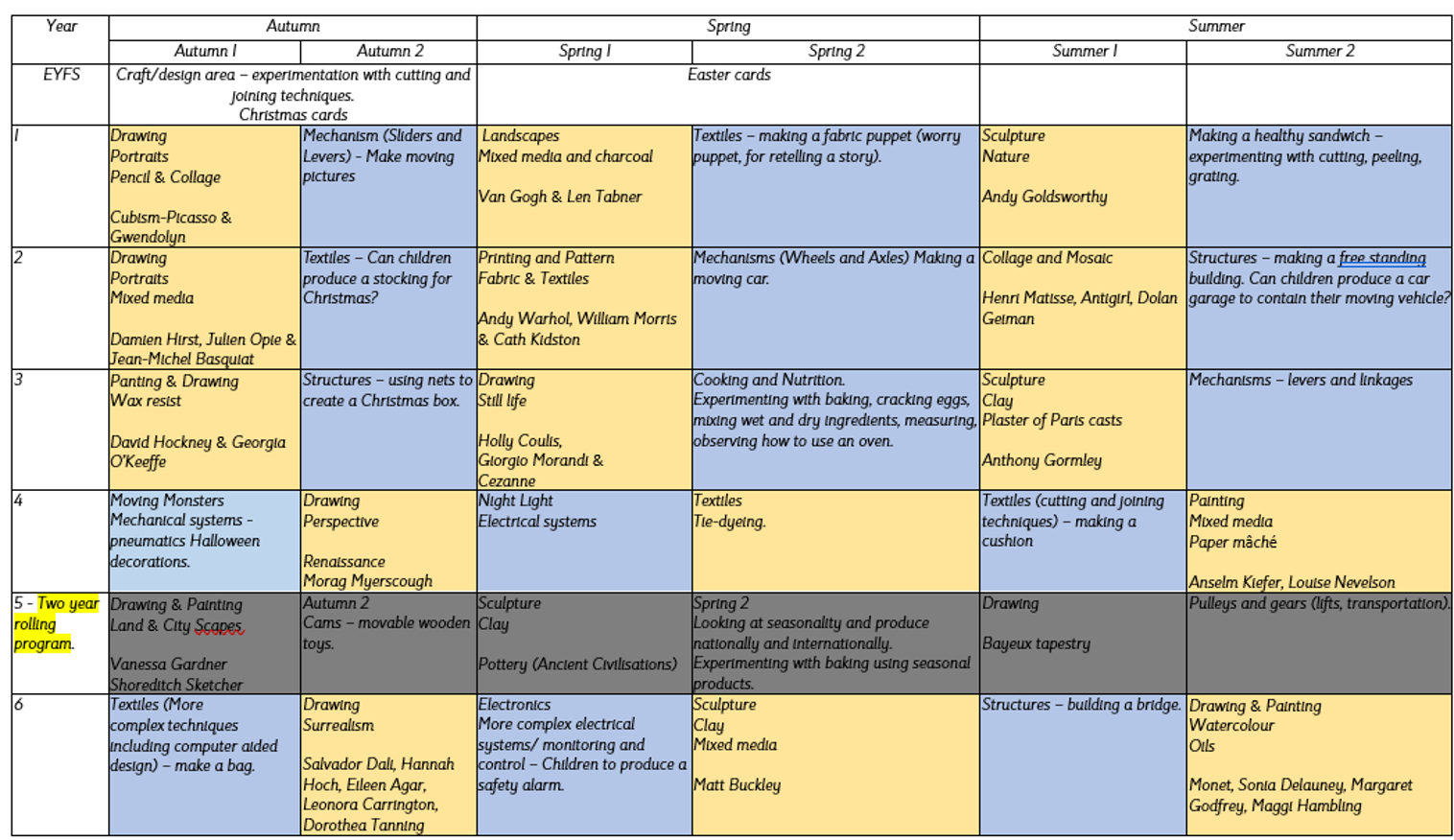DT at Yohden Primary School
Intent
Design and Technology is an inspiring, rigorous and practical subject. Design and Technology encourages children to learn to think and intervene creatively to solve problems both as individuals and as members of a team. At Yohden Primary, we encourage children to use their creativity and imagination, to design and make products that solve real and relevant problems within a variety of contexts, considering their own and others’ needs, wants and values. We aim to, wherever possible, link work to other curriculum areas such as maths. English, science, computing and art. This is why our design and technology curriculum is based on projects which link to the children’s experiences, current learning or are designed to be exciting and engaging. Design and technology at Yohden Primary School always considers the 3P’s – the product that we wish to create, what is the purpose of our intended product and what person would be in mind when designing said product. The children are also given opportunities to reflect upon and evaluate past and present design technology, its uses and its effectiveness and are encouraged to become innovators and risk-takers. Design Technology is to be taught in all year groups through at least one topic per term, which includes, for KS1, structures, mechanisms, textiles and cooking and adds electrical systems to that list for KS2.
Implementation
Through a variety of creative and practical activities, we teach the knowledge, understanding and skills needed to engage in an iterative process of designing and making. The children work in a range of relevant contexts (for example home, school, leisure, culture, enterprise, industry and the wider environment).
When designing and making, the children are taught to:
Design
- Use research and develop design criteria to inform the design of innovative, functional, appealing products that are fit for purpose, aimed at particular individual or group.
- Generate, develop, model and communicate their ideas through discussion, annotated sketches, cross-sectional diagrams, prototypes, pattern pieces and computer-aided design
Make
- Select from and use a wider range of tools and equipment to perform practical tasks (for example, cutting, shaping, joining and finishing) accurately
- Select from and use a wider range of materials and components, including construction materials, textiles and ingredients, according to their functional properties and aesthetic qualities
Evaluate
- investigate and analyse a range of existing products
- evaluate their ideas and products against their own design criteria and consider the views of others to improve their work
- understand how key events and individuals in design and technology have helped shape the world
Technical knowledge
- apply their understanding of how to strengthen, stiffen and reinforce more complex structures
- understand and use mechanical systems in their products
- understand and use electrical systems in their products
- apply their understanding of computing to program, monitor and control their products
These projects will be recoded in floor books in KS1 and DT Project books in KS2. These books should be annotated by teachers in KS1 and in KS2 by the children. They should show children’s work and photographs of their practical experiences.
Class teachers will differentiate appropriately within their lessons for greater depth and SEND children. Subject leader will provide advice and support as to how to do this and also resources such as easy grip scissors, clamps, saws etc.
Long Term Plan

